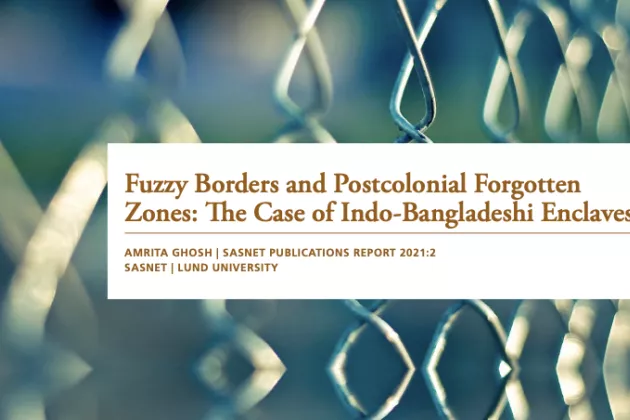Dr. Amrita Ghosh, currently visiting researcher at SASNET, released her report "Fuzzy Borders and Postcolonial Forgotten Zones: The Case of Indo-Bangladeshi Enclaves" as part of a preliminary pilot project focusing on questions of identity and space across the complex Bengal borderlands.
The full report is now available on our website.
Abstract:
This is a preliminary pilot project that encompasses an overview on the Indo-Bangladeshi complex borderlands, focusing on the enclaves or ‘chitmahals’ that became unique stateless conflict zones between India and Bangladesh. A historic Land Boundary Agreement was signed in 2015, that officially exchanged all chitmahals of both Indian and Bangladeshi side towards incorporation and inclusion within national sovereignty, after almost seventy years since the Partition of the Indian subcontinent.
Yet, in 2021, the question about identity and space still remains that pose a challenge to easy resolutions within these complex borderlands. This study is divided into sub-sections that delve into a history and scholarship on the complex Bengal borderlands; thereafter, I focus on the former enclaves as zones of state abandonment, different from other conflict zones. In light of new scholarship on the once stateless people and former enclaves, I read the enclaves as still hovering in a space of ‘abjectness’ between inclusion within national sovereignty and not yet fully there.
Thus, this project asks a larger question, whether a “third identity” is possible for the people of the enclaves, and does their former statelessness itself become a unifying resistant force? The section on gender, and the focus art and cultural productions from the chitmahals all point to the instability of the borderlands, that are sometimes still narrating an alternate modality of being in these spaces.
About the author:
Amrita Ghosh has a Ph.D in literature and Partition Studies from Drew University, USA, and a postdoc from Linnaeus University, Sweden, where she worked on literature from the conflict zone of Kashmir. She is currently working on a monograph on Kashmir with Lexington Books, USA and her co-edited anthology, Yeats and Tagore: A Postcolonial Re-envisioning, is forthcoming by Brill Publications in 2021. She is the co-founder-editor of Cerebration, a bi-annual literary journal. Ghosh has been a lecturer of English at Seton Hall University, USA and is currently a visiting researcher at SASNET, Lund University.
